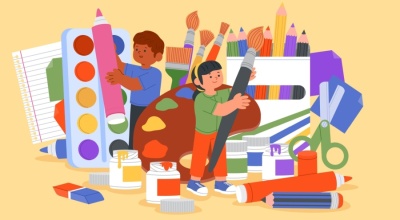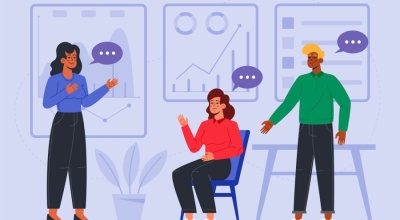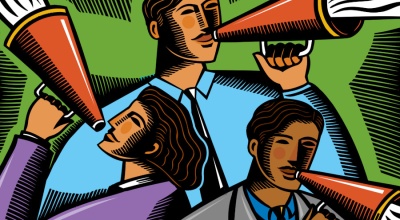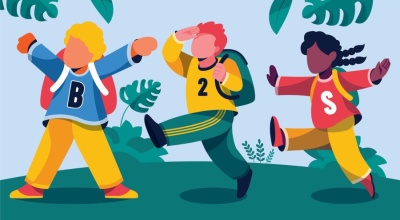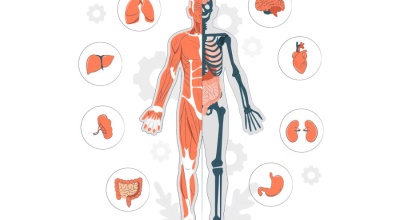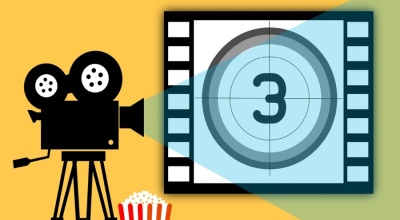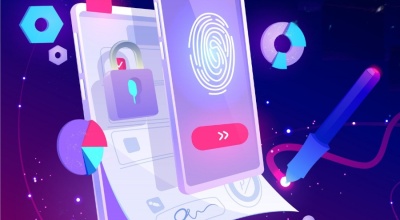Plastic straws are consistently one of the most littered plastic items, which means they end up in our waterways and are harmful to fish and wildlife. Single-use plastic products, like plastic beverage bottles, are the “biggest source of trash” found in or near water bodies, according to the Ocean Conservancy.
TheLastPlasticStraw.org | 100 ways to live plastic free
500 million plastic beverage straws are used every day in the United States and then immediately discarded, adding to the flow of trash to landfills and litter polluting lakes and beaches.
Watch. Explore. Discover.
The health of the ocean is in danger. Conservation planning and restoration projects are making a difference.
View the beauty and mystery of the ocean realm captured on video around the globe.
Marine debris, also known as marine litter, is human-created waste that has deliberately or accidentally been released in a lake, sea, ocean or waterway. Floating oceanic debris tends to accumulate at the center of gyres and on coastlines, frequently washing aground, when it is known as beach litter or tidewrack. Deliberate disposal of wastes at sea is called ocean dumping.
Ten Ways to Unpackage Your Life
Bring Your Own Bag
Say no to single use paper and plastic bags and bring your own high quality reusable bag. Whether you’re picking up groceries, getting takeout food or clothes shopping, use your own bag. Each reusable bag can eliminate hundreds (if not thousands) of single-use plastic or paper bags!
Carry a Reusable Water Bottle
Each week, Americans buy enough plastic water bottles to circle the earth five times! Carrying your own bottle cuts waste and is much cheaper. Typically, bottled water costs 2000 times more than tap water, is actually less safe to drink, and loses taste tests in competition with tap water.
Pack a Waste-Free Lunch
Do away with throw-away lunch packaging. Each child who brings a brown bag lunch to school every day generates 67 pounds of waste each year.
Bring Your Own Cup
The average American once used 500 paper cups a year. Replacing your single-use paper, plastic or Styrofoam cups with a reusable cup or mug can have a huge impact. Try keeping a cup in your bag, at the office, or in your car so you always have one around. Most coffee shops offer a discount for bringing your own cup!
Slow Down and Dine In
A big reason we have a food packaging problem to begin with is because people want to eat on the go – whether it's a drive-through or grab-n-go. Take a breath, slow down and dine in. Get your coffee “for here” or enjoy a home-cooked meal with friends and family and say goodbye to single-use packaging.
Say NO to Straws or Bring Your Own
Plastic straws are consistently one of the most littered plastic items, which means they end up in our waterways and are harmful to fish and wildlife. Say NO to straws! If you really need one, get a reusable straw and bring your own. To get a sense of the problem, check out this funny.
Avoid Heavily Packaged Foods
Heavily packaged foods are bad for the environment and they’re usually unhealthy for you too. Buy foods that aren’t heavily packaged, like fresh produce and bulk items.
Bring Your Own Container and Utensils
Need to grab lunch on the go? Bring your own container and utensils to cut down on “the other leftovers” from your take out meal. You can also bring your own container for leftovers when you eat at a restaurant - no more single-use "doggie bags"!
Use No Bag or a Fabric Bag to Carry Produce and Other Grocery Items
You’ve worked so hard to bring reusable bags to the store, why fill them up with plastic produce bags? Bring your own fabric bags for produce and bulk items. Many companies make reusable produce bags from hemp, organic cotton and even recycled plastic.
Communicate
Let your friends and family know what you’re doing and help them get involved. Write letters to companies that over-package and tell them you’re concerned about this issue. You’ll be surprised how powerful leading by example can be!
Millions of tons of plastic waste enter the ocean every year, even plastic that goes in the trash can often ends up in the sea!
Story of Bottled Water
The film explores the bottled water industry’s attacks on tap water and its use of seductive, environmental-themed advertising to cover up the mountains of plastic waste it produces. The film concludes with a call to take back the tap, not only by making a personal commitment to avoid bottled water, but by supporting investments in clean, available tap water for all.
Story of Bottled Water FAQs
Credits
The Story of Bottled Water was co-created and released by The Story of Stuff Project and a coalition of partners, including Corporate Accountability International, Food & Water Watch, Polaris Institute, Pacific Institute and Environmental Working Group. The movie was produced by Free Range Studios.
Is bottled water cleaner?
The EPA regulates tap water under the Safe Drinking Water Act. Public water operators must provide reports to customers describing their water’s source, evidence of contaminants, and compliance with federal, state, and local regulations. The FDA regulates bottled water and cannot require certified lab testing or violation reporting; bottlers themselves are responsible for testing. Furthermore, the FDA doesn’t require bottled water companies to disclose where the water came from, how it was treated, or what contaminants it contains.
Is bottled water tastier?
Corporate Accountability International’s “Think Outside the Bottle” Campaign has held countless taste tests comparing bottled water to tap water, as have many media outlets, from the New York Times to Cleveland’s local TV news channel. The results generally favor the tap. But ultimately, the point isn’t whether one tastes better than the other, its how our taste—and our tastes—are shaped by advertising rather than by what’s good for us.
Is bottled tap different than plain tap?
Bottled water companies go to great length to tell you that while their water originates from a public water source, its more than just filtered tap water. They boast proprietary, state-of-the-art, multistage filtration processes and esoteric references to mineral additives that make their water more than just water, and certainly better than tap.
But, as Tony Clarke of Canada’s Polaris Institute points out in his book, Inside the Bottle, “unlike other resource production processes, where raw materials like timber, minerals, and oil are transformed into new products, bottled water is different. Bottled water is about ‘turning water into water.'” And keep in mind that 10 percent to 15 percent of the cost of bottled water goes to the advertising budget. We not only buy their myths, we pay extra for them!
What’s the energy footprint of water bottles?
The Pacific Institute breaks it down like this: “Because bottled water required approximately 1 million tons of PET [Polyethylene Terephthalate] in 2006, those bottles required roughly 100 billion MJ of energy. A barrel of oil contains around 6,000 MJ, so producing those bottles required the equivalent of around 17 million barrels of oil. This is enough energy to fuel one million American cars for one year.” If that sounds crazy that’s because it is!
Really, water is a right?
General Comment 15 of the United Nations Committee on Economic, Social and Cultural Rights—the definitive interpretation of human rights laws regarding water—says “the human right to water entitles everyone to sufficient, safe, acceptable, physically accessible and affordable water for personal and domestic uses” … and …” is indispensable for leading a life in human dignity. It is a prerequisite for the realization of other human rights.”
In other words, it is the job of our governments (as the entities responsible for guaranteeing human rights) to ensure that we have good, clean, affordable tap water.
Need some first steps to take?
Many companies sell safe, easy-to-clean, lightweight drinking water bottles. Food & Water Watch and Corporate Accountability International—two of our partners on this film—offer sleek, stainless steel, reusable bottles to their members. Or pick up a mug or glass or sippy cup or … well, you get the point.
An under-the-sink filter can eliminate both bacterial and chemical concerns if you have either. And you can learn more about your water quality by contacting your local water utility. If find something that concerns you, don’t just turn to bottled water, ask questions, talk to your neighbors and organize to win improvements to your water supply.
What can I do?
Before the bottled water craze hit, we took it for granted that public fountains were part of any public building: schools, offices, sports stadiums and parks. Let’s bring them back! In the U.S., many state building codes mandate that there be one source of public water for every 1,000 people the building has capacity for. Why not subsidize public water fountains as part of local efforts to build blue?
Bottled water bans are also spreading fast.In the U.S., San Francisco, Minneapolis, Seattle, and Salt Lake City have all banned bottled water at city functions to save money and promote their cities’ highly drinkable tap water. And in Canada, the Polaris Institute reports that as of December 2009, 72 municipalities from 8 provinces and 2 territories had implemented restrictions on bottled water. Way to go!
Documentary Film STRAWS
The Last Plastic Straw: What can you do to join the movement?
- Simply request “no straw please” at bars, cafes, and restaurants and join us in the global movement to eliminate plastic drinking straws from our landfills, our waterways, our oceans, and our beaches. Take the pledge!
- Reach out to local eateries in your neighborhood or town and ask them to change their protocol to “only serve straws upon request.” Simply download and Print PDF and ask them to try it for the month of July in honor of Plastic Free July.
- Encourage businesses to make the change to non-plastic straw options – like paper, rye wheat, glass, or stainless steel – if diners do request a straw. We have a business-specific pledge for them to sign, too.
- Organize a screening of STRAWS the documentary film that features Nuñez and PPC Allies Tim Robbins, Wallace J. Nichols, and Pam Longobardi. See reviews and buy the DVD for public awareness and educational use.
Public Downloads
All items are free to view, share, and download.
Public Downloads - Español (Spanish)
When available, we provide all our content with a Spanish version in our public download section. You can find additional material from sources listed in all our articles.
Download Marine Debris Activities, Information and Resources
Download Marine Debris Activity Books
Download Marine Debris Coloring Books
Download World Ocean Day Activities
June 8th
Download Marine Debris Videos
Plastic shopping bag
That change seemed to already be in effect in Venice Beach Community, where clerks in all three open checkout lines at a Ralphs supermarket were bagging groceries into a colorful array of reusable bags. Mary Thomas, one of the market's customers, said she has been bringing them for years
A reusable fashionalbe shopping bag is the perfect Christmas (Holiday!) gift. And put a birthday gift in a reusable bag instead of wrapping it!
In use by consumers worldwide - modern lightweight shopping bag is the invention of Swedish engineer Sten Gustaf Thulin.
American and European patent applications relating to the production of plastic shopping bags can be found dating back to the early 1950s
China banned very thin plastic bags nationwide in 2008. "China Says Its Plastic Bag Ban Has Saved 4.8 Million Tonnes Of Oil"
Video Playlist: Talking Trash and Taking Action











They Dumped 2 Million Tires Into The Ocean. Fifty Years Later You Won’t Believe the Results!
Suggest a topic here to be turned into a video: http://bit.ly/2kwqhuh
Subscribe for more! ...


